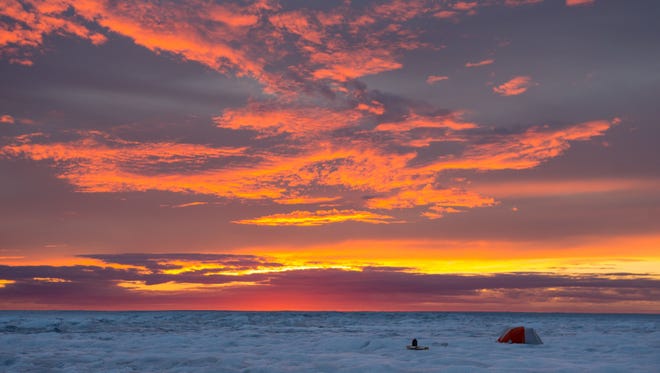Sunny summer days fueling rapid Greenland ice melt
 Doyle Rice
Doyle Rice
Clear skies in Greenland aren’t necessarily a good thing: Over the past two decades, sunny summer days have caused huge amounts of ice to melt in Greenland, helping to raise sea levels worldwide, a new study said.
In fact, about 4,000 gigatons of ice in Greenland has been lost since 1995. That's turned into roughly 1 quadrillion gallons of water, estimated study co-author Stefan Hofer of the University of Bristol in the United Kingdom.
That's about as much water as there is in Lake Michigan.
Scientists used data from satellites along with computer models and determined that summertime clouds have been steadily decreasing there over the past two decades. This additional sunshine means more of the sun's radiation makes it to the surface of the Earth, fueling additional melting.
Scientists found that from 1995 to 2009, summer cloud cover decreased by approximately 0.9% a year.
The study was published in the peer-reviewed journal Science Advances, a publication of the American Association for the Advancement of Science in Washington, D.C.
What's new in this study is that scientists found that clear skies contribute to twice as much melting in Greenland as do warmer temperatures.
In fact, the research showed that just a 1% reduction in summer cloud cover melts as much ice as the annual domestic water supply of the USA, or 180 million times the weight of a blue whale.
The increased summer sunshine in Greenland is likely due to changes in the North Atlantic Oscillation, a large-scale climate pattern in the atmosphere. As for what's causing the changes in that pattern, the most likely culprit is decreasing Arctic sea ice cover, which then alters atmospheric circulation patterns.
The study may help scientists better understand why the ice sheet has shrunk at an accelerating rate since the mid-1990s. Melting Greenland ice has been the biggest single contributor to the rise in global sea levels.

A separate study, released Monday in Nature Climate Change, said that global average sea level has been rising at a faster rate during the past two decades than in previous decades, and is expected to accelerate further over the coming century.
It also said that 25% of the average global sea-level rise in 2014 can be attributed to mass loss from the Greenland ice sheet alone
Rising sea levels are one of the most obvious signs of man-made climate change.
Ice sheets contain enormous quantities of frozen water, according to the National Snow and Ice Data Center. If the entire Greenland ice sheet melted, scientists estimate that sea level would rise about 20 feet globally. If the whole Antarctic ice sheet melted, sea level would rise by about 200 feet. No scientists predict that either will occur.
